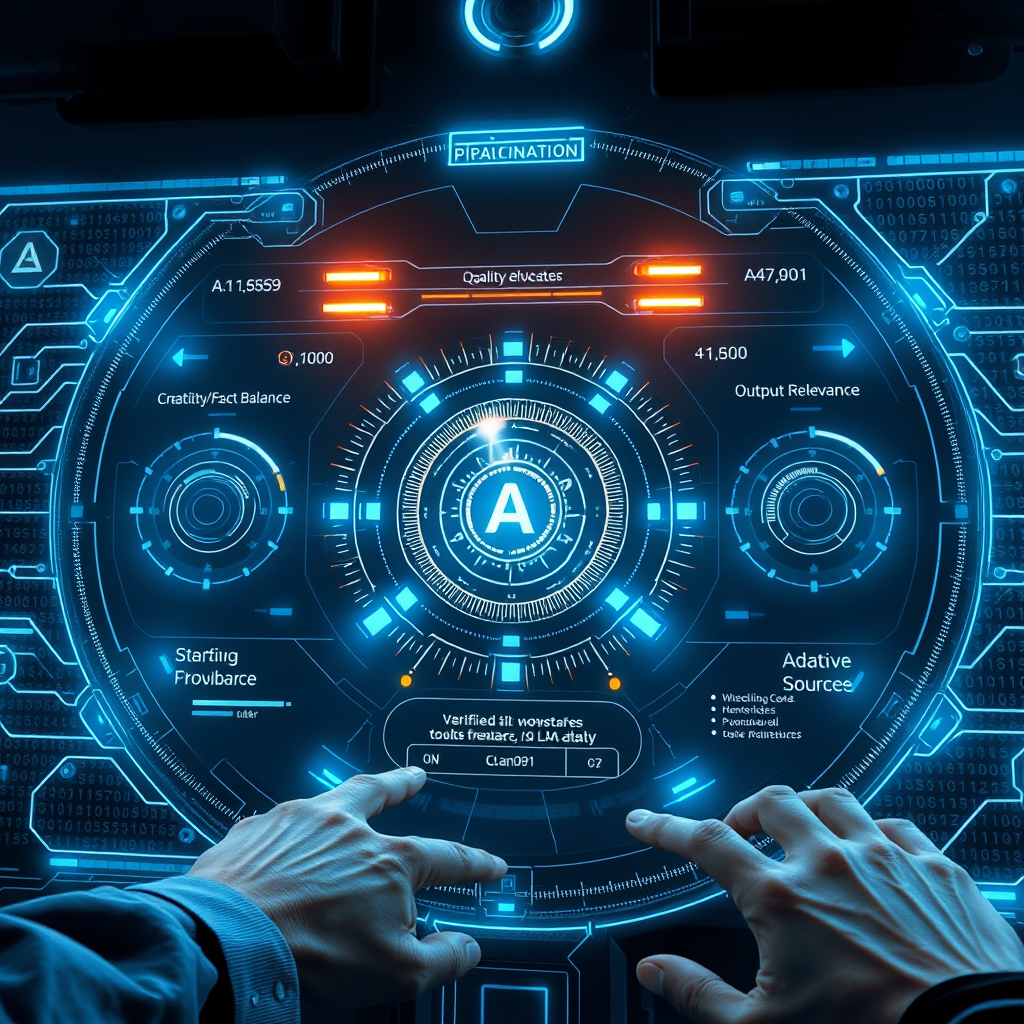
Introduction
Large language models (LLMs) have become ubiquitous in modern enterprises, powering chatbots, automated content creation, and sophisticated decision‑support systems. Yet the mere deployment of a model is no longer a competitive advantage. In the early days of AI, the focus was on acquiring the most powerful model; today, the real differentiation lies in how well an organization can tune, evaluate, and embed that model into its business processes. The conversation with Capital One’s Divisional Architect reveals a set of professional‑grade techniques that elevate LLMs from a generic tool to a strategic asset. These methods—precision prompting, dynamic temperature control, multi‑dimensional evaluation, retrieval‑augmented generation, continuous adaptation, and sustainability‑oriented pruning—collectively address the twin challenges of reliability and efficiency. By treating the model as a living system that learns from real‑world feedback, companies can reduce hallucinations, increase relevance, and lower operational costs. The following sections unpack each strategy, illustrate how they interlock, and explore the emerging frontiers that promise to reshape the AI landscape.
Main Content
Precision Prompting and Dynamic Temperature
Precision prompting is more than crafting a clever question; it is a disciplined approach to framing context, constraints, and desired output style. The architect’s experience shows that well‑structured prompts can boost output relevance by 40–60 %. This is achieved by embedding explicit instructions, example‑driven templates, and hierarchical sub‑prompts that guide the model through a logical reasoning path. Coupled with a dynamic temperature schedule—where creativity is dialed up for exploratory tasks and dialed down for fact‑based queries—teams can maintain a fine balance between novelty and accuracy. In practice, a financial institution might set a low temperature for compliance‑related summaries while allowing a higher temperature for generating creative marketing copy, thereby preserving brand voice without sacrificing factual integrity.
Multi‑Dimensional Evaluation Frameworks
A single metric cannot capture the nuanced performance of an LLM across diverse applications. The architect recommends a framework that tracks over fifteen quality factors simultaneously, including factual accuracy, coherence, bias mitigation, and user satisfaction. By automating these checks and visualizing trends over time, organizations can spot drift early and trigger re‑training or prompt adjustments. For example, a customer‑service chatbot that suddenly shows a spike in off‑topic responses can be flagged for immediate review, preventing reputational damage. The continuous monitoring loop also feeds into the dynamic temperature control, ensuring that the model’s creative output remains aligned with business objectives.
Retrieval‑Augmented Generation (RAG) and Hybrid Human‑AI
Retrieval‑augmented generation marries the generative power of LLMs with the reliability of curated knowledge bases. By retrieving relevant documents in real time and conditioning the model on that evidence, RAG systems dramatically reduce hallucinations. The architect notes that hybrid human‑AI systems—where human reviewers provide structured feedback—further amplify accuracy. In a risk‑management context, analysts can flag incorrect inferences, and the system learns to adjust its weighting of retrieved sources. This human‑in‑the‑loop approach has been shown to improve decision‑making accuracy by up to 72 % compared to fully automated pipelines, underscoring the value of preserving human judgment in critical workflows.
Continuous Adaptation and Sustainability
Model stagnation is a silent threat to long‑term performance. Continuous adaptation cycles—comprising periodic fine‑tuning, prompt evolution, and evaluation refresh—ensure that the LLM stays attuned to evolving data and user expectations. The architect highlights dynamic neural pruning as a sustainability breakthrough: by automatically deactivating redundant network pathways during specific tasks, companies can cut inference latency and energy consumption by 30–50 % without compromising quality. This not only lowers operational costs but also aligns with corporate sustainability goals, a growing concern for investors and regulators alike.
Future Directions: Personalization, Neuromodulation, and Cross‑Model Collaboration
Looking ahead, real‑time personalization emerges as a key frontier. Imagine an LLM that adapts its reasoning style based on a user’s interaction history while safeguarding privacy through differential privacy techniques. Early experiments with neuromodulation‑inspired methods—temporarily boosting particular cognitive aspects of the model for specialized tasks—promise to unlock new levels of task‑specific performance. Moreover, cross‑model collaboration frameworks, where multiple specialized LLMs coordinate under a central orchestrator, could mitigate current limitations in mathematical reasoning and contextual awareness. Such ensembles would allow an organization to deploy a suite of models, each excelling in a niche domain, and let them jointly produce a holistic answer that surpasses any single model’s capability.
Conclusion
The shift from static deployment to adaptive optimization marks a pivotal moment in enterprise AI. Precision prompting, dynamic temperature, multi‑dimensional evaluation, RAG, continuous adaptation, and sustainability‑oriented pruning together form a comprehensive toolkit that transforms LLMs into reliable, efficient, and strategically valuable assets. As the technology matures, the gap between basic users and true innovators will widen, making early adoption of these optimization practices essential for long‑term competitiveness. Organizations that embed these principles into their AI culture will not only reduce errors and costs but also unlock new revenue streams and customer experiences.
Call to Action
If you’re ready to move beyond trial‑and‑error and adopt a systematic approach to LLM optimization, start by auditing your current prompting strategies and evaluation metrics. Engage your data scientists, product managers, and domain experts in a cross‑functional workshop to design precision prompts and set up a multi‑dimensional monitoring dashboard. Explore RAG solutions that tap into your internal knowledge bases, and consider implementing dynamic pruning to cut inference costs. Share your progress, challenges, and insights with the broader community—your experience could help shape the next wave of AI best practices. Let’s collaborate to push the boundaries of what large language models can achieve for business and society alike.
